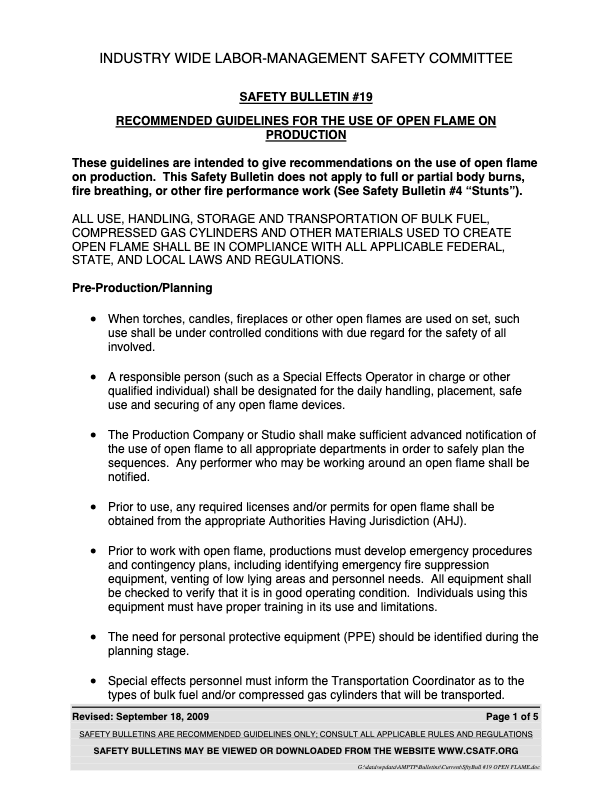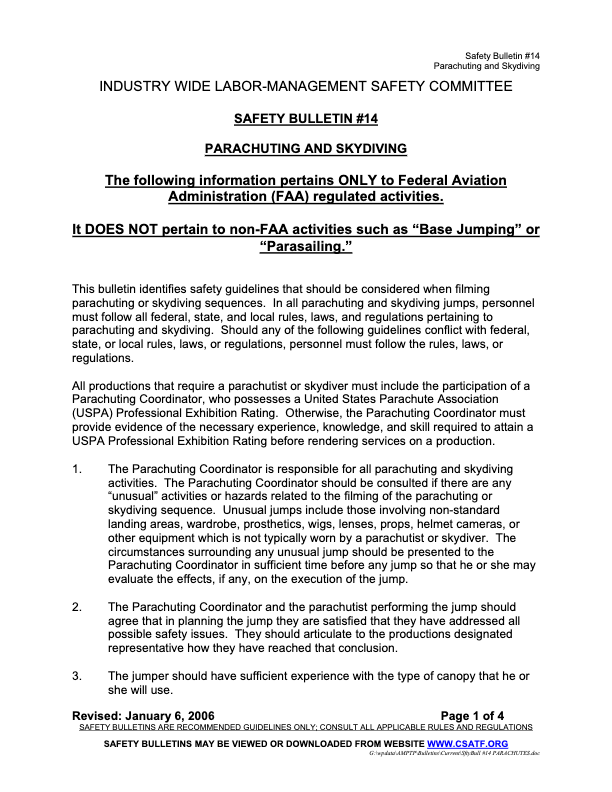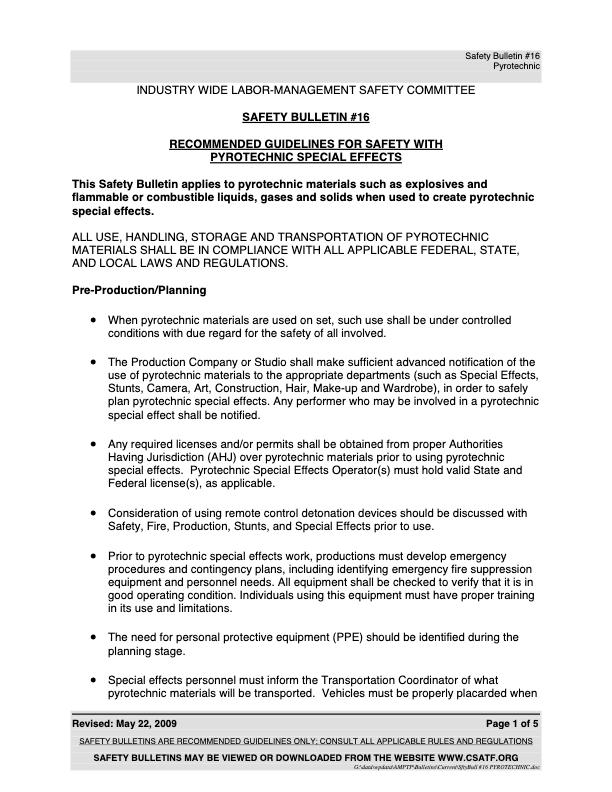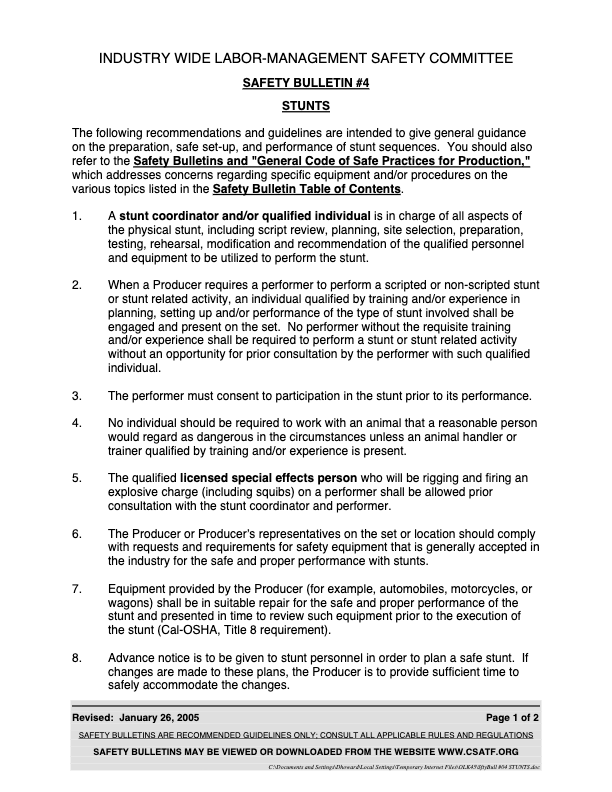Safety Bulletin
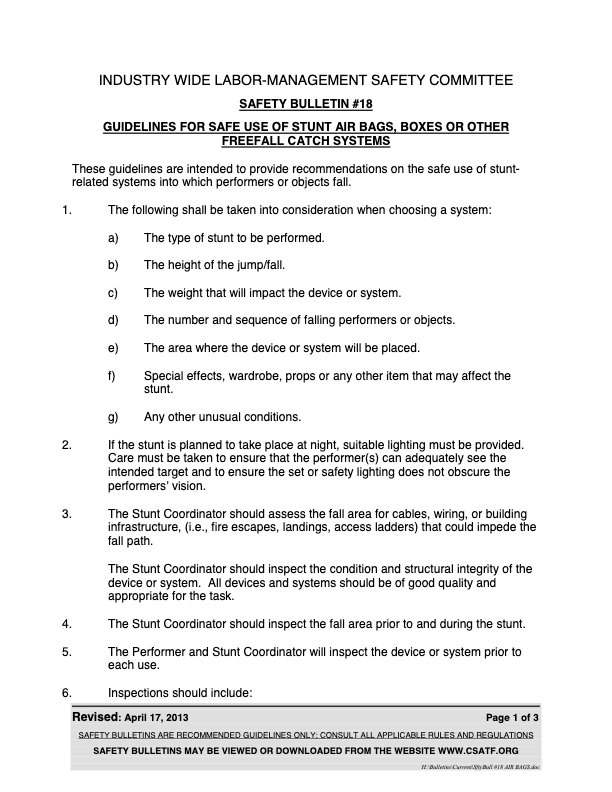
Guidelines
These guidelines are intended to provide recommendations on the safe use of stunt-related systems into which performers or objects fall.
- The following shall be taken into consideration when choosing a system:
- The type of stunt to be performed.
- The height of the jump/fall.
- The weight that will impact the device or system.
- The number and sequence of falling performers or objects.
- The area where the device or system will be placed.
- Special effects, wardrobe, props or any other item that may affect the stunt.
- Any other unusual conditions.
- If the stunt is planned to take place at night, suitable lighting must be provided. Care must be taken to ensure that the performer(s) can adequately see the intended target and to ensure the set or safety lighting does not obscure the performers’ vision.
- The Stunt Coordinator should assess the fall area for cables, wiring, or building infrastructure, (i.e., fire escapes, landings, access ladders) that could impede the fall path. The Stunt Coordinator should inspect the condition and structural integrity of the device or system. All devices and systems should be of good quality and appropriate for the task.
- The Stunt Coordinator should inspect the fall area prior to and during the stunt.
- The Performer and Stunt Coordinator will inspect the device or system prior to each use.
- Inspections should include:
- Air Bags
- Stitching, seams and vents
- Fans
- Power Source: Adequate power supply from an independent source, appropriate cable size and secured connections.
- Boxes
- Condition – dry, structural integrity for the application, empty
- Assembled and oriented per the Stunt Coordinator’s instructions.
- Other Devices or Systems
- Condition of integral components of any device or system used.
- Air Bags
- Qualified personnel should set up each device or system.
- Use a sufficient number of spotters, designated by the Stunt Coordinator, around each device or system to ensure safety.
- The duties for ground-based spotters should include, but are not limited to the following:
- Protecting performers, through the use of individual crash pads, peripheral devices or other equipment, in case the performers become misaligned during the fall.
- Observing any unusual changes in atmospheric conditions, particularly wind and effects-related debris, which may affect the performer’s fall.
- Lifting and moving the device or system should the performer become misaligned during the fall.
- Continuously inspecting all power operated equipment.
- Ensuring no unnecessary personnel or equipment are within the fall area.
- Being aware of location peculiarities that may affect the performer’s fall.
- Implement additional pre-planning if two performers are to use the same device or system at the same time. For example, it may be problematic when the two performers’ weights are significantly different when using an air bag.
- Prior to the stunt and after any change or modifications to the stunt sequence, the First Assistant Director shall conduct a safety meeting at the site with all personnel involved.
- Conduct a walk-through or dry run of the stunt sequence with all appropriate personnel on the day of the stunt. Assure that all have a clear understanding of the intended action and their duties.
- Communicate to all appropriate personnel the method and meaning of abort signals. Discuss primary and/or back-up signals (e.g., radios and hand signals).
- Allow only safety personnel and personnel necessary for assisting, directing, filming or performing the stunt in the stunt area.
- The performer(s) should have the necessary experience and knowledge to perform the particular stunt sequence.
- Fall protection for all other personnel working at height is required.

